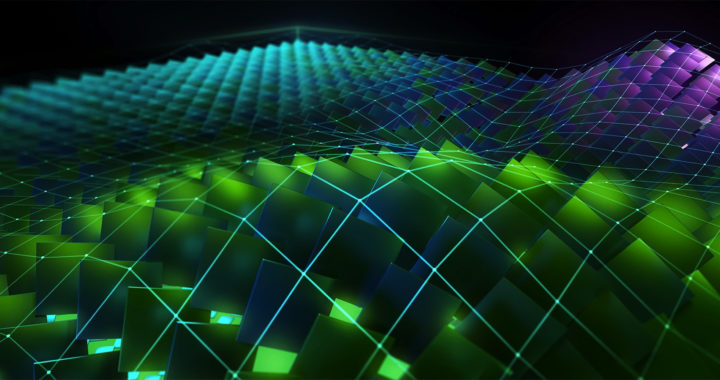At the heart of Nvidia graphics processors are CUDA cores. These are the main processing units of Nvidia GPUs that were introduced beginning from the GeForce 8 series and onwards responsible for graphical computation and even general-purpose computing. The number and generation of these cores also represent the technical specification of a particular Nvidia GPU and its theoretical processing capabilities. But what exactly are CUDA cores? What do they do and how do they work? How are these cores different from other sets of cores in an Nvidia GPU such as the Tensor cores and RT cores? This article explains the purpose and capabilities of CUDA cores.
Understanding the Purpose and Capabilities of Nvidia CUDA Cores: Parallel Computing for Specific-Purpose Graphics Processing and General-Purpose Processing
The design of modern discrete and integrated graphics processors has now become multicore. A multi-core processor is a microprocessor on a single integrated circuit with at least two separate processing units called cores. Each core can read and execute instructions or provide computing capabilities. The cores collectively provide multiprocessing capabilities.
Note that the aforementioned is the general rationale behind a multicore GPU design and the introduction of CUDA cores by Nvidia. It is also worth mentioning that other semiconductor companies have equivalent cores in their respective GPU design and architecture. AMD has Stream Processors while Intel has Intel Xe Engines for its Intel Arc GPUs.
Background
CUDA cores are the main processing units of an Nvidia GPU. Processing graphics requires multiple computations. The emergence of more intensive graphical user interface of modern operating systems and software programs have increased the demand for GPUs with better and faster graphics processing capabilities.
A CPU can process graphics but it is not as efficient as a GPU because it is also tasked with general-purpose processing tasks. A single GPU core is not as powerful as a single CPU core but multiple cores can take on multiple calculations required for processing graphics. This is the reason why modern GPUs have multiple GPU cores and specific Nvidia GPUs have CUDA cores that number from hundreds to thousands.
The number of CUDA cores defines the processing capabilities of an Nvidia GPU. More cores translate to more data that can be processed in parallel. This is called parallel computing and it is important in processing graphics because of the underlying complex calculations required for displaying still images and moving images such as animations and videos.
Purpose and Applications
It is also important to note that mid-range to higher-end Nvidia GPUs are now used for different processing or computing requirements and use cases. The term “CUDA” comes from the Compute Unified Device Architecture of Nvidia. This architecture is a proprietary and closed-source parallel computing platform and application programming interface that allows software programs to use the GPU for general-purpose computing.
The introduction of CUDA in 2007 and the subsequent launching of Nvidia graphics processors with CUDA cores have expanded the applications of these microprocessors beyond processing graphical calculations and into general-purpose computing. Examples include big data analytics, training AI models and AI inferencing, and scientific calculations.
Nevertheless, based on the aforementioned, the purpose of CUDA cores is to enable parallel computing on an Nvidia GPU and also allow general-purpose computing on a graphics processing unit or GPCGPU. These cores are similar to a CPU core but they are less complex and are designed to work in unison with one another for rendering high-resolution graphics or performing large-scale mathematical operations or calculations.
Capabilities
Remember that the number of these cores defines the theoretical capabilities of an Nvidia graphics processor. This is evident from the fact that GeForce RTX GPUs have more of these cores than GeForce GTX GPUs or GeForce GT GPUs. More cores translate to faster and more efficient parallel processing or mathematical computations.
The general capabilities of CUDA cores essentially stem from their numbers. However, at the individual level, it is important to reiterate the fact that each core is simpler or less complex than a CPU core. The particular core is designed for mathematical operations such as matrix multiplication and other calculations. A group of these cores can execute the same code on different data at the same time or in parallel for faster processing.
However, despite their specialized capabilities, these cores have limitations and are still considered general processing units within a GPU design. Nvidia has developed included other sets of cores in its high-end GPUs. These are Tensor cores for accelerating AI workloads, and RT cores for hardware-accelerated or real-time ray tracing.
Main Takeaways and Conclusion: Nvidia CUDA Cores are Specialized Microprocessor Cores in Graphics Processing Units Designed for Parallel Computing
Parallel computing is the main capability of a graphics processor or GPU that sets it apart from a central processing unit or CPU. The greater number of cores in a GPU allows it to handle multiple mathematical operations simultaneously. These are essential in graphics processing tasks such as running video games, encoding or decoding videos, creating animations and editing or enhancing images, and generating computer-aided designs.
Nvidia CUDA cores are designed for parallel computing. However, because of the capability of its GPU to handle multiple mathematical operations simultaneously, these cores are also equipped with capabilities that have expanded their applications beyond graphics processing. CUDA cores have also equipped Nvidia GPUs with general-purpose processing capabilities that have become useful in applications outside of graphics processing.

